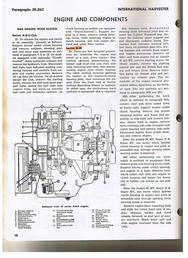[email protected]
New User
This is my first go at this. I had a rod knocking, bad, checked it out and the crank has to be reground. The engine needs to come out to do this and the flywheel, clutch and all have to be torn down. So, while I'm in that deep, seems like to me I should just re-sleeve, piston, ring, crank bearings, head, valves and go the whole nine yards.
[b:57bd83c701]Problem is that I'm not sure where to start. If you guys could give some input on a logical progression of tear down it would be much appreciated. [/b:57bd83c701]
I don't know whether to just start taking things apart......or get all the parts first......or what....I'm at a loss here. Never cracked a tractor open and went this deep before. I want to do it completely myself, except for the machining............and have no experience or good friends that have a hankering to restore old tractors. I purchased the case/IH serviceman's guide from the local dealership and it is definately not a guide for a complete rebuild. It does not contain any real detailed information (an it cost me $50...bad decision) Your thoughts are much appreciated.
[b:57bd83c701]Problem is that I'm not sure where to start. If you guys could give some input on a logical progression of tear down it would be much appreciated. [/b:57bd83c701]
I don't know whether to just start taking things apart......or get all the parts first......or what....I'm at a loss here. Never cracked a tractor open and went this deep before. I want to do it completely myself, except for the machining............and have no experience or good friends that have a hankering to restore old tractors. I purchased the case/IH serviceman's guide from the local dealership and it is definately not a guide for a complete rebuild. It does not contain any real detailed information (an it cost me $50...bad decision) Your thoughts are much appreciated.



